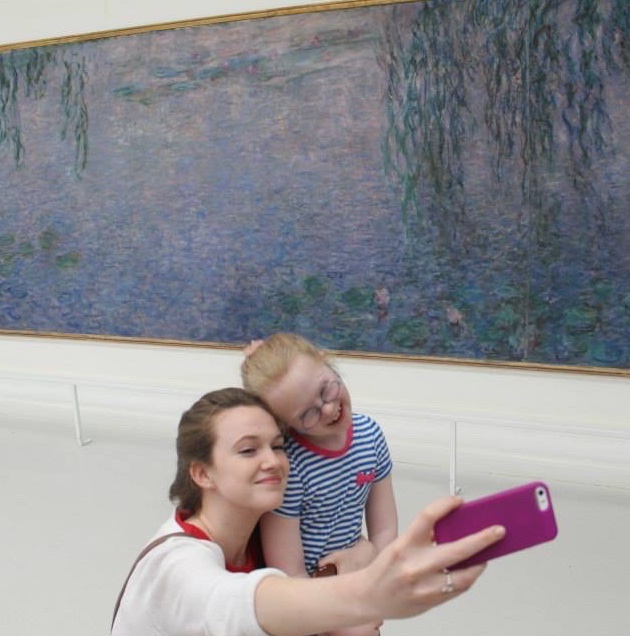
It is easy to see the beauty of Monet’s Water Lilies. You stare at the work and catch new colours that were invisible at first. The painting decomposes and recomposes itself the longer you look at it. It takes on the nature of the thing it represents: water. Monet is known for painting the same subject over and over. It is not surprising that he can see depths of these scenes that most of us would not catch when walking through the garden.
The little description that hangs across the wall from the painting in the MOMA describes the scene as a ‘calming balm for the modern soul’. The quiet, steady, patient meditation of the artist on his subject not only creates a masterpiece, but also an entire atmosphere of peace and awe. The beauty of nature, and of human interaction with nature creates a sense of accord within you. Your place as a human citizen on the earth is momentarily explained through the beauty that the artist captured. As you turn away from the painting the reality that life is more than just a quiet meditation of a lily pond hits you as a crowd pushes by to view the painting. But the calming balm has done its trick. You can recall that peace that Monet captured and hold it close in your chest and use it as a weapon against the chaos of the world around you.
As time goes on and the memory of looking at the painting becomes faded and dreamlike, you begin to doubt its power. You see the painting mimicked on postcards, tote bags, key chains, coffee mugs, computer cases, pencil cases, iPhone cases and plastered across the walls of teenage girls’ bedrooms. It is a cliché. A pretty backdrop against which people play their mundane, emotional, confusing, and starkly human lives. You begin to cringe at the dramatic reaction you had to the painting as you stood in front of it alone. You forget the masterpiece and remember more the people who take pictures of the work and quickly make those pictures their screensaver and lock screen or posted it on their Instagram stories, snapchat stories, and Facebook feeds. You begin to think you were deceived, you were tricked, you were taken in by a pretty picture. Your feelings were manipulated to create a false moment of stability in a world that can seem to offer very little stability elsewhere.
Then one day, as you sit at your desk surrounded by bored and sleepy co-workers, you notice two girls across the room from one another. They are both focused on their computer screens, and as they read or watch or whatever, they run their fingers through their hair, pulling it back into a ponytail and then letting it fall onto their shoulders again. Without noticing, one red-headed, one dark and curly, the two have mirrored each other perfectly. No one else notices. Everyone, including the two subjects of this little drama, continue to be sleepy and bored as they work away on their laptops, but you notice, and you laugh, and are surprisingly delighted by the inadvertent symmetrical dance. Then, you are taken aback as a flash of Monet’s waterlilies passes briefly through your mind’s eye.
The description that hangs on the wall is wrong to direct the viewer to read the painting as a calming balm. This description separates the painting from life – making it an antidote for a chaotic existence, rather than a beautiful reflection of a world full of beauty. Your experience contradicts the MOMA’s blurb – the painting has already integrated itself into your heart, so much so that even the simple, syncopated movement of mundane life reflects it. It is still on postcards, tote bags, and keychains, but it is also in the sewers, the sky, the girl’s hair, and everywhere else in the universe where beauty can hide.
[su_divider top=”no” size=”1″]
Written by Barbara Egan, a summer 2018 intern at the WYA North America office.







